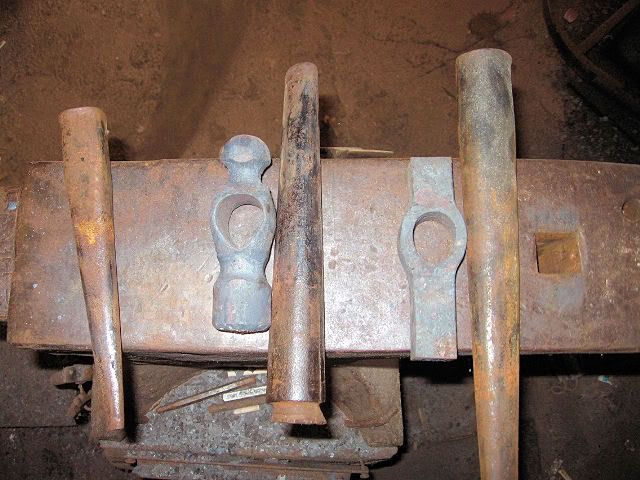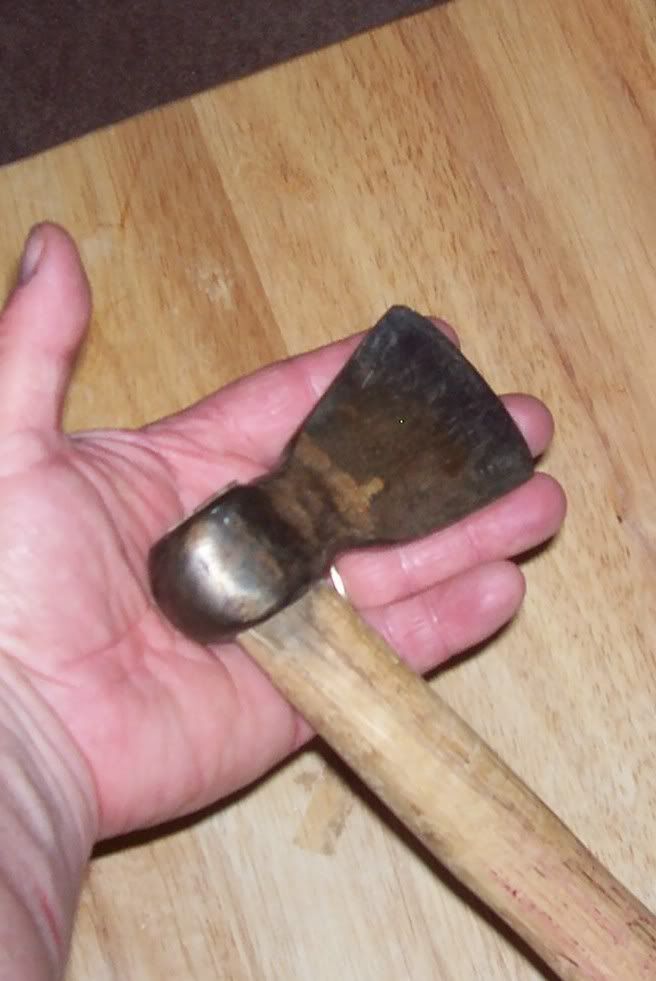The main reason some people use a ballpeen hammer head to forge into a spike hawk is because it already has the handle eye hole already in it. Punching/drifting the handle hole is the hard part that gets most people.
If you look at original ***** hawks, you can find a few that have a center section that looks like it started out as a ballpeen hammer. But most don't.
The other thing you will note on spike hawks is the full size of the head. They generally are VERY SMALL. They were designed to use as a weapon, not as a wood cutting/chopping tool. So they tended to be SMALL. The smaller the head, the easier it is to swing it around when fighting. And the LONGER you can swing it around before you get tired.
As an example, compare how long you can swing a blacksmithing hammer and a claw hammer around like a weapon. Now imagine doing the same thing with the handle twice as long!
A quick look at medieval war hammers will show you the same thing. They had a small/light head on a long handle. The traditional spike hawk was the same way.
The other thing you will notice on the original spike hawks is how small/thin the handles were - besides being longer than on regular hawks. Again, they were designed for war - to be swung around fighting and chopping people, not logs and firewood. So they didn't need thick/tough/strong wood handles to take that shock.
So the current eye size on most ballpeen hammers will be large enough for the expected use of a spike hawk. But if you want to use it to chop firewood, tent poles/stakes, or to throw in competition, then you will need a larger handle and corresponding eye hole.
If you truly want to make a spike hawk and want a bigger handle eye, just start with a modern camping hatchet head. Remove the handle, and then cut it in half - top and bottom halves when looking at it from the flat side. I've used my chopsaw (very carefully) and I've hot-chiseled it. Some have cut it with a torch. Now, take that blob of the original hammer pole and forge that out into your hawk blade. Then forge the old blade portion into your spike. Yes, it sounds reversed, but they actually work better this way - more material for a blade, and it's easier to form that old blade portion into a spike. And you have that LONG handle eye to take a larger wood handle. It's also easier to drift it out a bit to shape. If the original hatchet head is large enough, you could cut it into thirds, and end up with three spike hawk heads much closer in size to so many of the originals.
Just my humble observations to share, and best used in conjunction with your own research.
Mikey - that grumpy ol' German blacksmith out in the Hinterlands
p.s. Yes, I have made several spike hawks out of ballpeen hammer heads, and gave them all away. I've made several out of old hatchet and small axe heads, and have been "talked out of" them.






